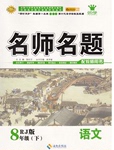题目内容
8.-Isn't it hard to drive downtown to work?-Yes,that's why I ____ to work by train.( )
| A. | have been going | B. | have gone | C. | was going | D. | will have gone |
分析 句意:-难道开车去市中心上班很难吗?-是的,这就是我为什么一直乘火车上班的原因.
解答 答案A."have been doing"表示过去发生的动作一直持续到现在,可能刚刚结束也可能继续进行下去;"have done"表示过去发生的动作对现在的影响;"was/were doing"表示过去的某个时间点或时间段正在做某事;"will have done"对于将来的某个时间点来说将会完成某事.根据句意,:-难道开车去市中心上班很难吗?-是的,这就是我为什么一直乘火车上班的原因.说明说话人从过去到现在一直在乘火车,而且还要继续乘下去.用现在完成进行时,故选A.
点评 本题考查现在完成进行时,考查时态时,如果有时间状语,就充分利用时间状语,如果没有,要结合上下文找出来

练习册系列答案
 优学名师名题系列答案
优学名师名题系列答案
相关题目
13.We can achieve a lot when we learn to let our differences unite,rather than _______ us.( )
| A. | divide | B. | reject | C. | control | D. | abandon |
16."It isn't the first time I at home,"he said frankly.( )
| A. | had spoiled | B. | have spoiled | ||
| C. | had been spoiled | D. | have been spoiled |
3.The strong wind ______ on the lake,so they decide to put off the dragon-boat race.( )
| A. | has been blowing | B. | blows | ||
| C. | has blown | D. | blew |
13.Where is my car?I just parked it behind your house.It now.( )
| A. | has been disappeared | B. | is disappeared | ||
| C. | has disappeared | D. | disappears |
20.A Russian plane broke up in the air,_____ all 224 people on board which was believed _______ by a bomb planted by Islamic State.( )
| A. | killing; to have been caused | |
| B. | having killing; to have been caused | |
| C. | killing; to be caused | |
| D. | having killed; to have caused |
17.The desk that ____clean so I could do homework was always surrounded with bowls of bad milk,old magazines and so on.( )
| A. | may have been | B. | would have been | ||
| C. | must have been | D. | should have been |
2.Word makes people heart-broken ______ a baby in a stolen car was cruelly killed by a bad guy.( )
| A. | where | B. | which | C. | when | D. | that |